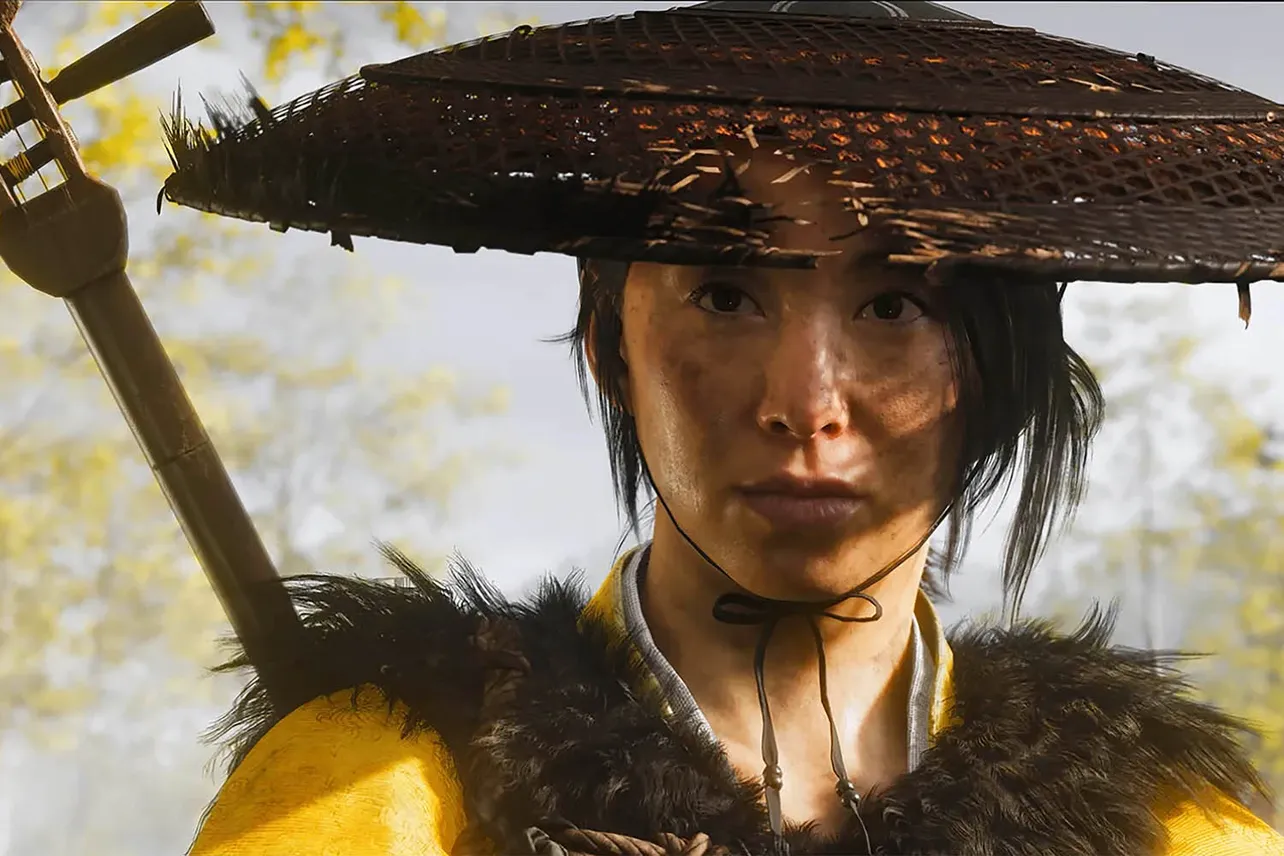Open Photo Mode by tapping right on the DualSense D‑pad. You can pause and compose almost anywhere — while exploring, mid‑combat, or aiming — though cutscenes are off limits. An autofocus toggle is available if you don’t want to set focus manually.
You can reset individual values inside each submenu or restore everything to default with Square. A confirmation prompt prevents accidental wipes, and your last-used setup persists between sessions, so you’re not rebuilding settings each time.
There’s no dedicated “save photo” button in‑mode. For a clean still, hide the on‑screen UI, then use the DualSense create/share button to take the screenshot. Captures are stored in the PS5 Media Gallery.

How to use the Photo Mode in Ghost of Yotei
- Open Photo Mode by pressing 'Right' on the D‑pad.
- Pick a focal length, set focus distance, and choose an f‑stop to control background blur.
- Set time, clouds, and weather to shape light; add or reduce particles and wind as needed.
- Dial in colour grading, exposure, and contrast; adjust aspect ratio.
- Configure Atsu’s state, emote, and helmet/mask visibility; nudge Sword Glint if needed.
- For motion paths, record up to 16 camera positions and play the tracking shot with Triangle.
- Hide the UI, then capture with the DualSense create/share button; your image will be in Media Gallery.
Photo Mode features (full list)
| Setting | Options / Range |
|---|---|
| Tracking Shot | Record up to 16 camera positions; play the animated path with Triangle |
| Focal Length | 12 mm – 300 mm |
| Depth of Field | Off, or f/1.2 – f/63 |
| Focus Distance | 0.1 m – 200 m |
| Colour Grading | None, Vivid, B/W, B/W Vintage, Storm, Autumn, Samurai Red, Smoke, Maple, Ginkgo, Tintype |
| Colour Grading Intensity | 0 – 100% |
| Exposure Bias | -5.0 – 5.0 |
| Contrast (Black/White) | 1.0 – 3.0 |
| Particles | None, Red/Yellow/Orange/Green/Bamboo Leaves, Cherry Blossoms, Pampas Pollen, Ash & Embers, Fireflies, Dragonflies, Butterflies, Crows, Song Birds, Red Cranes, Shima Enaga, Aurora Weather |
| Particle Intensity | 0 – 100% |
| Wind Speed | 0 – 44% |
| Wind Direction | 0 – 358 |
| Clouds | Adjustable |
| Time of Day | Adjustable across 24 hours |
| Weather | Current, Clear, Fog, Heavy Fog, Sunbreak, Overcast, Rain/Snow, Heavy Rain/Snow, Thunder |
| Animated Environment | On / Off |
| Atsu (State) | None, Hide, Muddy, Bloody |
| Emote | Current, Angry, Confused, Dead, Disbelief, Disgusted, Fearful, Happy, Enraged, Intense, Neutral, Sad, Surprised, Amused, Annoyed, Concerned, Hopeful |
| Helmet / Mask | Show / Hide |
| Sword Glint | 0.00 – 15.0 |
| Aspect Ratio | Standard, 21:9, 32:9 |
| Music | Atsu’s Theme and more |
| Stamps | Multiple overlays |
Recommended focal lengths (portraits, landscapes, macro)
The in‑game camera covers a broad 12–300 mm range, so you can treat it like a real lens kit:
- Landscapes: 24 mm or wider for sweeping space and leading lines.
- Portraits: 35 mm for environmental context, 50 mm for tighter head‑and‑shoulder frames, 80 mm for flattering full‑body shots with shallow depth of field.
- Macro / detail: 100 mm and up to isolate textures or pull distant drama closer.
These are starting points, not rules. Pushing an ultra‑wide for portraits or a long lens for landscapes can produce striking, unexpected compositions.
Lighting, time, and weather
Scrub the full 24‑hour clock to see how light reshapes the scene. Midday gives hard contrast and crisp shadows; golden hour warms the palette and softens edges; nighttime expands the sky and highlights speculars. Combine time with “Clouds” and “Weather” to define mood and depth, or to spotlight the part of the frame you want the eye to land on.


Tip: a slight tilt — a Dutch angle — can add tension or motion to otherwise static frames, especially with action or movement cues in view.
Animated vs. still camera
By default, the camera is “animated,” freezing characters while leaving ambient motion — wind, leaves, flocks — alive. That’s ideal for cinemagraph‑style captures. The Particle system lets you layer in debris, embers, insects, or birds and steer their flow with Wind Direction; intensity controls keep the effect subtle or cinematic.

Toggle Animated Environment off when you want a perfectly static image with no background movement pulling focus.

Photo Mode is available from the start, so you can build a look and carry it with you. The toolset is broad, but the quickest improvements come from three moves: pick a lens with intent, control light with time and weather, and use a grade that supports your subject. From there, experiment.

